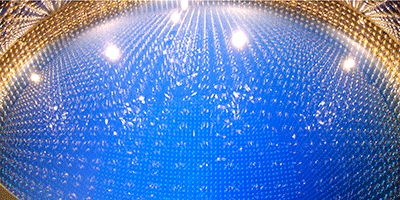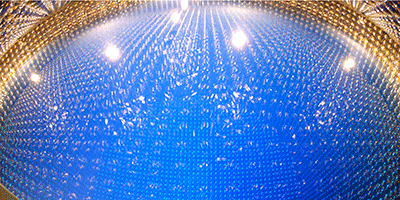Proton Longevity Pushes New Bounds
Protons live a long time but perhaps not forever. Several theories predict that protons can decay, and a handful of experiments have tried to detect such an event. The Super-Kamiokande experiment in Japan has the longest track record in the search for proton decay, and its researchers have now published a new lower bound on the proton lifetime that is 2.5 times greater than their previous bound. The proton’s observed stability places constraints on certain extensions of the standard model of particle physics.
Proton decay is an expected outcome of most grand unified theories, or GUTs, which meld together the three main particle forces—strong, weak, and electromagnetism—at high energy. A certain class of GUTs, for example, predicts that a proton should decay into a positron and meson with a lifetime of about years, which means roughly 1 decay per year in a sample of protons. Experiments have already ruled this possibility out.
Other GUTs that incorporate supersymmetry (SUSY), a hypothetical model that assumes all particles have a partner with different spin, predict that the proton decays into a meson and a neutrino with a lifetime of less than a few times years. The Super-Kamiokande collaboration has looked for signs of this decay in a 50,000-ton tank of water surrounded by detectors. If one of the many protons in the tank were to decay, the meson’s decay products (muons, mesons) would be detectable. The researchers simulated such proton decay events but found no matches in data spanning 17 years. From this, they conclude that the proton lifetime for this SUSY-inspired decay pathway is greater than years.
This research is published in Physical Review D.
–Michael Schirber





